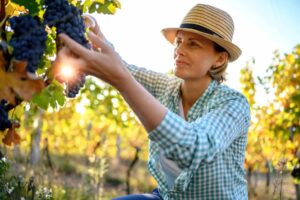The review of one of the most important Italian wines in the world is now an unmissable appointment, especially after the restrictions suffered in recent years. The red Sagrantino di Montefalco returns to be the absolute protagonist for three days in its city, Montefalco (PG), again in spring, with the Anteprima Sagrantino 2018 event, organized by the Consorzio Tutela Vini Montefalco.
In this particularly pleasant period to travel to Umbria, there were truly many journalists, sommeliers and food and wine experts who populated the Umbrian town to taste the most recent vintage of Sagrantino di Montefalco DOCG.
The “Railing of Umbria”, thus defined the splendid Montefalco, hosted this wine festival for the twentieth time, transforming the town hall into an all-round tasting room and opening the doors of its cellars to an incredible public, of extreme thickness in the world of wine.



The news of the 2022 edition of Anteprima Sagrantino
There was no shortage of news and above all innovations in this edition of Preview Sagrantino! First of all the Vinopolitan (exactly as a metro stop sign) that is a shuttle and transport service available to journalists and professionals in the sector who will participate in the event, wandering through cellars and tastings divided throughout the city.
All in a simple and smart way thanks to the second innovation, the “Anteprima Sagrantino” App which allows you to better organize trips and dedicated wine appointments.

The participation of the Montioni Winery in Anteprima Sagrantino 2018
Like every year, we at Montioni were thrilled to take part in such an important event for us producers of Montefalco!
The Vinopolitan stop at the Montioni winery
Our farm has also set up a Vinopolitan stop to facilitate visits by journalists and experts to our cellar.
Here is the comment by Paolo Montioni:
” Having a MONTIONI stop like the most famous London in Trafalgar Square is a source of pride and above all it identifies us as one of the Montefalco wineries with more vocation for export. “
The events and illustrious guests at the Montioni farm
Numerous operators in the sector and the world specialized press visited our cellar and tasted our wines.
In particular, we at Montioni wanted to open our doors to industry experts with an event dedicated to the meeting and pairing of cuisine with Sagrantino wine:
“Cuisine and Sagrantino: the influence of Sagrantino Montioni wine as an ingredient in the preparation of some typical dishes and its combination with must-have dishes of Italian cuisine”


During the three days of tasting experiences in the cellar, moments of conviviality and sharing of the same great passion, we had the honor of hosting leading figures from the world wine scene
Here are some of our distinguished international guests during these days of the event:
Paul Caputo well-known wine writer from the United Kingdom,
Actis Grande Joan, Winkler Don, Dalton Levi and Horkey Matthew, influential writers and tasters from the United States;
Reinwald Bonnie from Denmark
Farkas Rozsika from Germany
Among the special guests that we had the honor of welcoming during the 2018 Anteprima Sagrantino there is also the journalist and TV presenter Monique Soltani, one of the 50 most influential women in the United States in the world of wine.
Together with the Wine Oh TV troupe, Soltani produced a reportage dedicated to Montioni wines and oil, as part of an ambitious project: the creation of cinematographic DOC films dedicated to travel and food and wine experiences in Italy.
The program will soon air in the United States, and it is an honor for us to have participated in an American TV project that concretely helps the export of Italian wine and food products.


The goal of the Montioni winery
The main objective of our winery continues to be the promotion of an indigenous wine such as Sagrantino di Montefalco in the foreign market.
In this way we will be able to make the rich territory of Montefalco and Umbria ever more international: valuable and segmented tourism is what we expect from this continuous commitment to our beloved land.
A goal shared also by the Consorzio Tutela Vini (Consortium for the Protection of Wines):
“The goal is to position the brand linked to Umbria wine in an even more incisive way, especially on international markets (…)”
We thank all the splendid figures we had the honor and pleasure of meeting on our farm during this magnificent edition of Anteprima Sagrantino!
The evaluations on the Sagrantino DOCG 2018
In general, Sagrantino di Montefalco 2018 was evaluated as harmonious, fresh and very balanced, without the caloric peaks recorded in the 2017 vintage.
This is also thanks to the year of fairly regular vegetative development which then brought decidedly ripe grapes with good acidity levels to the cellar.
The official judgment of the Montefalco Wine Consortium
4 stars (“fine vintage”) for 2018 and a specific score of 92/100.
This is how the technicians and oenologists inside the Consortium expressed themselves together with external specialists such as international sector journalists. Just to name some of the realities present: Giancarlo Gariglio (Slowine) and Giampiero Cordero (sommelier of the Michelin star restaurant “Il Centro” in Priocca).
Once again a great success for all Sagrantino di Montefalco producers!
On occasion, the winemaker may decide to leave them in if the grapes themselves contain less tannin than desired. This is more acceptable if the stems have ‘ripened’ and started to turn brown. If increased skin extraction is desired, a winemaker might choose to crush the grapes after destemming.
Wine is one of the most civilized things in the world and one of the most natural things of the world that has been brought to the greatest perfection, and it offers a greater range for enjoyment and appreciation than, possibly, any other purely sensory thing.
Ernest Hemingway Tweet
Removal of stems first means no stem tannin can be extracted. In these cases the grapes pass between two rollers which squeeze the grapes enough to separate the skin and pulp, but not so much as to cause excessive shearing or tearing of the skin tissues. In some cases, notably with “delicate” red varietals such as Pinot noir or Syrah, all or part of the grapes might be left uncrushed (called “whole berry”) to encourage the retention of fruity aromas through partial carbonic maceration.
The Grapes
The quality of the grapes determines the quality of the wine more than any other factor. Grape quality is affected by variety as well as weather during the growing season, soil minerals and acidity, time of harvest, and pruning method. The combination of these effects is often referred to as the grape’s terroir.
Grapes are usually harvested from the vineyard from early September until early November in the northern hemisphere, and mid February until early March in the southern hemisphere.
In some cool areas in the southern hemisphere, for example Tasmania, harvesting extends into May. The most common species of wine grape is Vitis Vinifera, which includes nearly all varieties of European origin. The most common species of wine grape is Vitis Vinifera, which includes nearly all varieties of European origin.

Manual harvesting is the hand-picking of grape clusters from the grapevines. In the United States, some grapes are picked into one- or two-ton bins for transport back to the winery. Manual harvesting has the advantage of using knowledgeable labor to not only pick the ripe clusters but also to leave behind the clusters that are not ripe or contain bunch rot or other defects. This can be an effective first line of defense to prevent inferior quality fruit from contaminating a lot or tank of wine.
Destemming is the process of separating stems from the grapes. Depending on the winemaking procedure, this process may be undertaken before crushing with the purpose of lowering the development of tannins and vegetal flavors in the resulting wine. Single berry harvesting, as is done with some German Trockenbeerenauslese, avoids this step altogether with the grapes being individually selected.
Crushing is the process when gently squeezing the berries and breaking the skins to start to liberate the contents of the berries. Destemming is the process of removing the grapes from the rachis (the stem which holds the grapes).
In traditional and smaller-scale wine making, the harvested grapes are sometimes crushed by trampling them barefoot or by the use of inexpensive small scale crushers. These can also destem at the same time. However, in larger wineries, a mechanical crusher/destemmer is used. The decision about destemming is different for red and white wine making. Generally when making white wine the fruit is only crushed, the stems are then placed in the press with the berries. The presence of stems in the mix facilitates pressing by allowing juice to flow past flattened skins.

Katerina Monroe
@katerinam • More Posts by Katerina
Congratulations on the award, it's well deserved! You guys definitely know what you're doing. Looking forward to my next visit to the winery!
